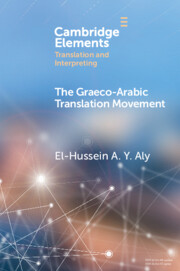Element contents
The Graeco-Arabic Translation Movement
Published online by Cambridge University Press: 10 June 2023
Summary
Keywords
- Type
- Element
- Information
- Online ISBN: 9781009385626Publisher: Cambridge University PressPrint publication: 06 July 2023
References
- 9
- Cited by

